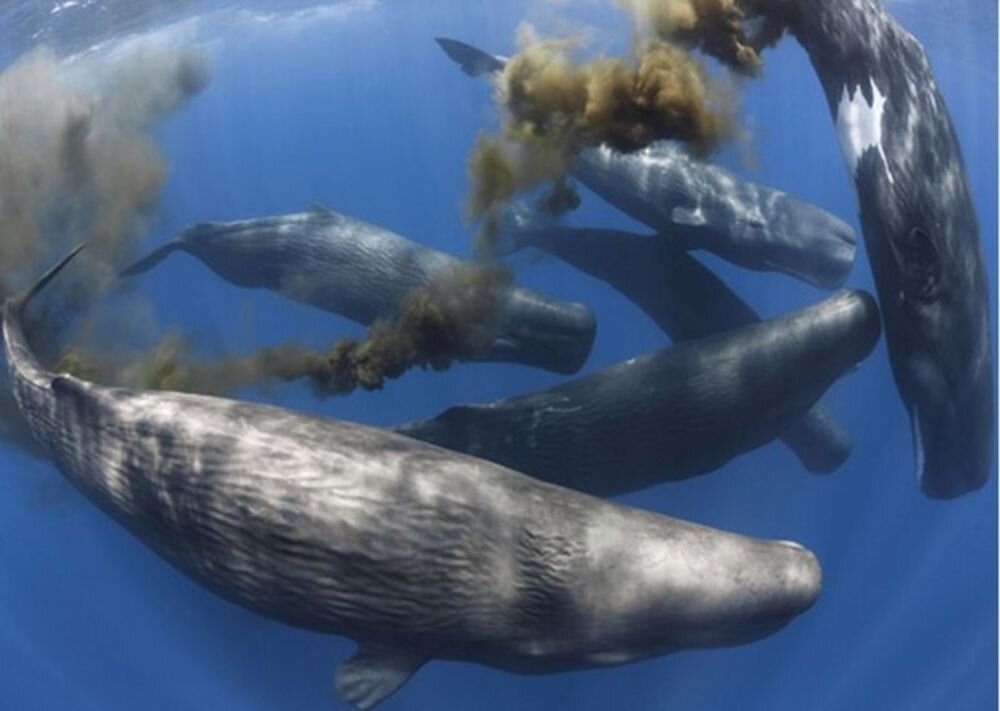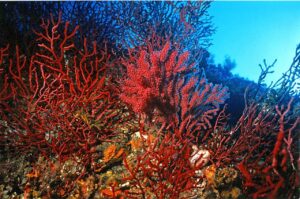 Whales are the world’s unsung heroes. One whale is worth thousands of trees in carbon capture and their poo is essential for phytoplankton to grow —phytoplankton absorb more than 4x the Amazon Rainforest, and contribute between 50-85% of the world’s oxygen.
Whales are the world’s unsung heroes. One whale is worth thousands of trees in carbon capture and their poo is essential for phytoplankton to grow —phytoplankton absorb more than 4x the Amazon Rainforest, and contribute between 50-85% of the world’s oxygen.
“Whales are ecosystem engineers. They help maintain the health and stability of the oceans, and even provide services to human society.”—Asha de Vos, Marine Biologist
THE WHALE PUMP explained

- whales dive deep in search for food
- whales travel far
- then they resurface to breathe
- and release enormous fecal plumes
- the poo contains essential nutrients from the depths that are brought to the surface of the ocean
- these nutrients stimulate phytoplankton growth
- phytoplankton produce oxygen and absorb CO2
- phytoplankton form the basis of all marine food chains
The amazing aspect of the whale pump is that it creates a vital nutrient cycle around the world, as whales are constantly migrating they are also always adding necessary nutrients to different corners of the ocean.
*phytoplankton rely on sunlight hence why they need to be on the surface.
WHALE CARBON STORAGE/SEQUESTRATION
Phytoplankton are carbon fixers = breathe CO2 and use it to grow, when they die they keep the carbon with them.
Similarly, when 1 whale dies, its carcass sinks to the bottom of the sea. That carbon is stored with it and isn’t released into the atmosphere. It is estimated that 33 tons of CO2 are stored within just 1 carcass, in comparison 1 tree absorbs 48 pounds of CO2 per year.
Every year it is estimated that whales transport 190,000 tons of carbon to the bottom of the sea—equivalent to taking 80,000 cars off the road for one year.
COMMERCIAL WHALING TODAY

IWC member states
There was a time when tens of millions of whales roamed the Earth….right before commercial whaling. In the 18th century this industry almost brought this majestic creature to extinction. Today, whale populations are slowly bouncing back, but their importance for a stable climate remains unappreciated.
The more whales, the more CO2 is sequestered!
In 1982 the International Whaling Commission placed a moratorium on commercial whaling on all whale species from 1986 onwards. All member states must abide.
Norway and Iceland were the two countries to object and continue with the practice. Although, Iceland has not caught a whale since 2018.
In 2019 Japan left the IWC and began to catch whales again. As a non-member the moratorium doesn’t apply.
3 ways you can protect whales:
- Support 30 x 2030 and MPAs to ensure that whales, all marine ecosystems and humans have a stable ocean and climate in the future.
- Sign this petition that urges Japan and the Faroe islands to stop their whaling practices
- Go plant-based. Try our fish-free challenge!













